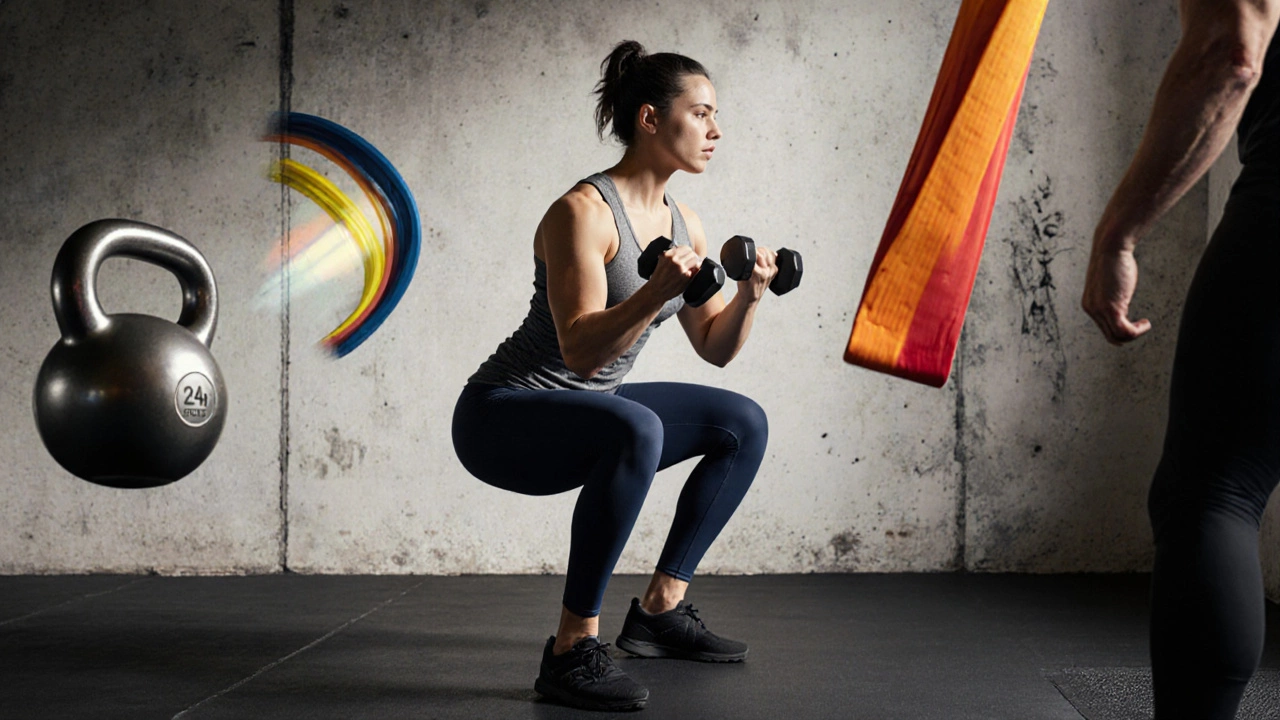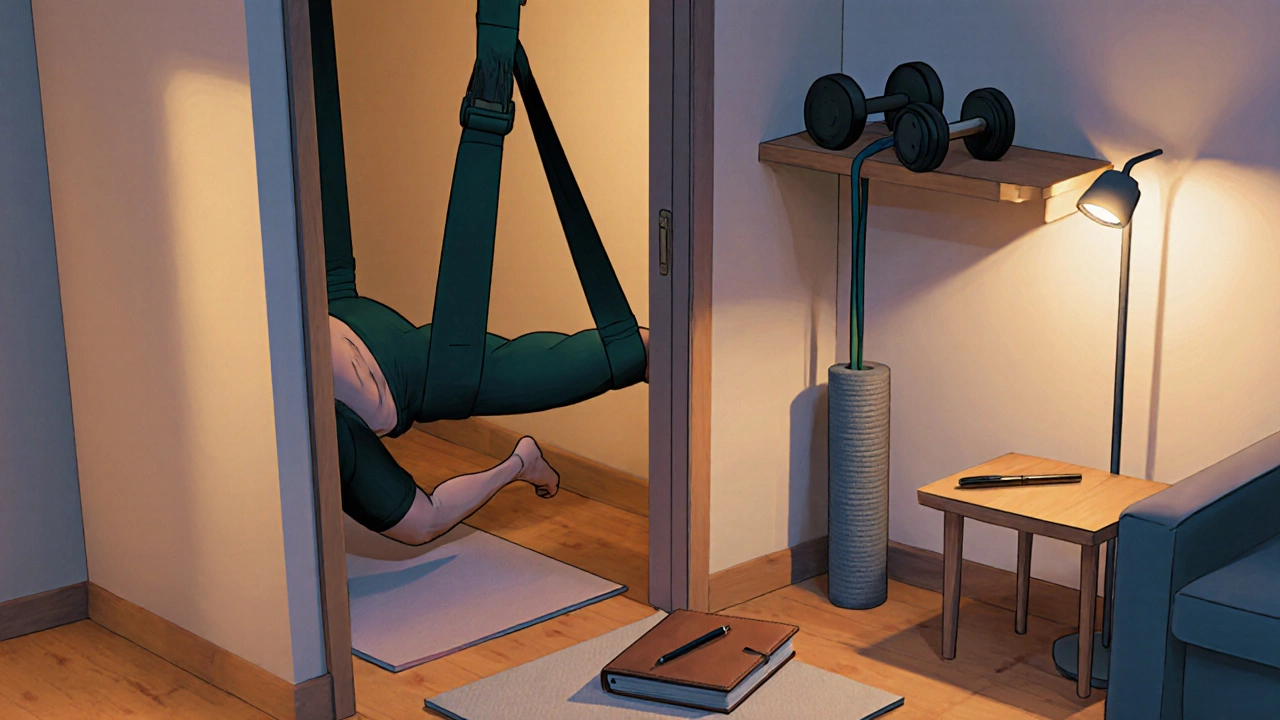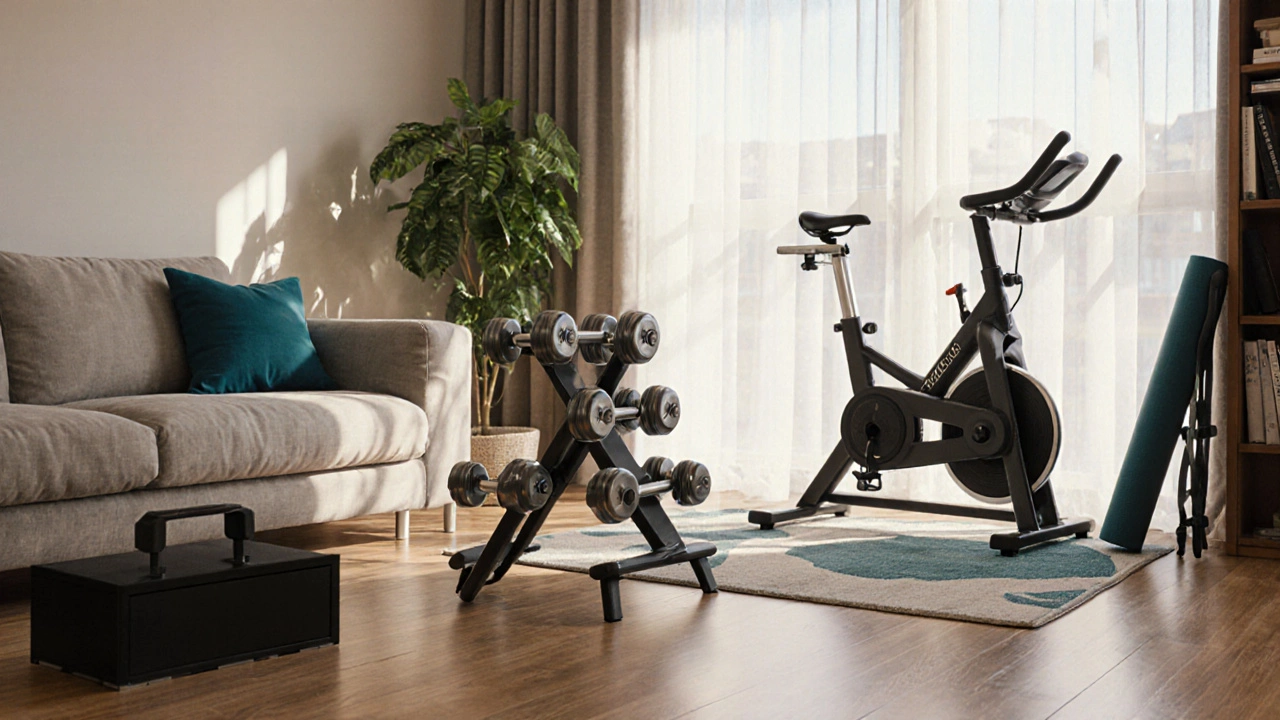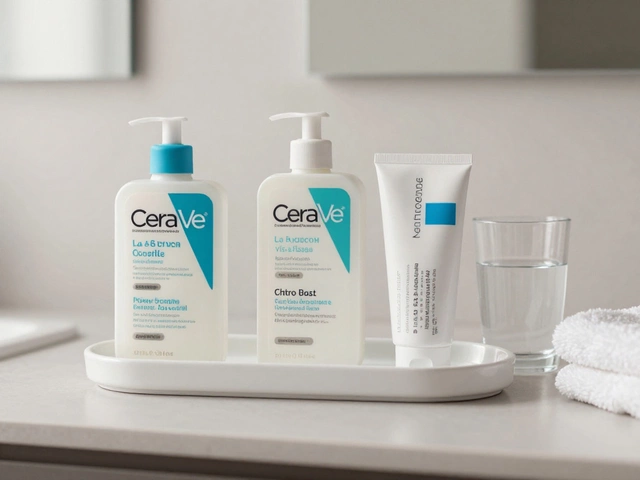Home Exercise Equipment Selector
Your Fitness Goals
Your Space & Budget
Your Personalized Equipment Recommendations
Based on your selections, here are the best options for your needs:
When people ask which home exercise equipment means any fitness gear designed for use within a house or apartment, ranging from small accessories to full‑size machines delivers the best results, the answer hinges on three things: your fitness goal, the space you have, and how much you’re willing to spend.
How to Judge Effectiveness
Before we rank any gear, let’s set the yardsticks you’ll use to compare them.
- Muscle activation: Does the gear let you work multiple muscle groups at once? Multi‑joint movements generally burn more calories and build strength faster.
- Progressive overload: Can you keep adding resistance or difficulty over weeks? If the load is fixed, you’ll hit a plateau quickly.
- Functional transfer: Does the movement mimic real‑world activities or sports? Equipment that improves posture, balance, or coordination adds extra value.
- Space efficiency: How much floor area does it occupy? A piece that folds or doubles as furniture wins in apartments.
- Cost per benefit: Compare price against the number of exercises it enables. A $300 item that replaces three separate machines scores high.
Strength‑Focused Gear
Building muscle without a full‑size rack is doable with the right tools.
- Adjustable dumbbells a set of hand‑held weights that let you dial the load from 5 to 50 lb (or more) with a twist or click mechanism. They replace a whole rack of fixed plates, take up a coffee‑table‑size slot, and support classic lifts like goblet squats, lunges, and shoulder presses.
- Kettlebell a cast‑iron weight with a handle, perfect for ballistic moves such as swings, snatches, and Turkish get‑ups. A single 24 kg kettlebell can provide a full‑body conditioning session in 20 minutes.
- Resistance bands elastic loops or tubes that come in graduated tension levels, ideal for both strength and mobility work. They’re cheap, travel‑friendly, and can simulate squats, rows, and overhead presses with minimal joint stress.
For most home users, a pair of adjustable dumbbells paired with a set of resistance bands covers 90 % of strength‑training needs while staying under $250.
Cardio Machines That Pack a Punch
If burning calories is your primary goal, look for machines that keep your heart rate in the aerobic zone while requiring little upkeep.
- Rowing machine a seat‑based device that mimics the full‑body motion of rowing a boat, engaging legs, core, and back. A quality model delivers up to 500 watts of power and offers variable resistance for progressive overload.
- Fold‑able stationary bike a compact cycle that can be stored upright against a wall, featuring magnetic resistance and a digital display. It’s gentle on joints and lets you track cadence, distance, and calories.
- Mini stepper a low‑profile device that simulates stair climbing, perfect for short, high‑intensity bursts. It fits under a desk for work‑break cardio.
The rowing machine often scores highest on the ‘muscle activation + calorie burn’ combo, but the fold‑able bike wins for noise‑sensitive apartments.

Flexibility & Core Tools
Movements that improve range of motion also protect you from injury and boost performance in other workouts.
- Yoga mat a non‑slip surface that cushions joints during floor work and provides a stable base for balance drills. Look for a 6‑mm thickness for comfort without sacrificing stability.
- Suspension trainer a set of straps with adjustable anchors that let you perform rows, planks, and single‑leg squats using your own body weight. It hangs from a doorframe or ceiling beam and folds flat for storage.
- Foam roller a cylindrical foam tool for myofascial release, helping muscles recover faster after intense sessions. A 36‑cm, medium‑density roller works for most users.
A suspension trainer offers the most functional upside-think of it as a portable gym that challenges both core and upper body.
Comparative Snapshot
| Equipment | Effectiveness Score* (out of 10) | Typical Cost (USD) | Floor Space Required (sq ft) |
|---|---|---|---|
| Adjustable dumbbells | 8 | $200‑$300 | 1‑2 |
| Kettlebell (24 kg) | 7 | $80‑$120 | 0.5 |
| Resistance bands (set) | 6 | $30‑$50 | 0.2 |
| Rowing machine | 9 | $600‑$1200 | 6‑8 |
| Fold‑able stationary bike | 8 | $400‑$800 | 3‑4 (vertical) |
| Suspension trainer | 8 | $100‑$150 | 0.5 (doorframe) |
| Yoga mat | 5 | $20‑$50 | 2‑3 |
| Foam roller | 4 | $25‑$45 | 0.3 |
*Score reflects how well the equipment fulfills the five effectiveness criteria listed earlier.
Budget‑Friendly Set‑Ups
Not everyone can drop $1,000 on a rower. Here’s how to cheat the price without cheating the workout.
- Start with a resistance band set. They cost under $50 and give you the ability to train legs, back, chest, and arms.
- Add a pair of adjustable dumbbells in the 15‑25 lb range. Look for sales around holiday weekends; you’ll often find a 40‑lb set for $180.
- Buy a door‑frame suspension trainer. It’s a $120 one‑time purchase that turns a simple doorway into a pull‑up bar, chest‑fly rig, and core‑stability station.
- Supplement with an inexpensive yoga mat and a foam roller for mobility work. Both together cost less than $70.
All together, the total stays under $500 and you have strength, cardio (band‑based HIIT), and recovery tools.

Common Mistakes and Maintenance Tips
Even the best gear can underperform if you use it wrong or let it wear out.
- Skipping progressive overload: Keep a log and increase weight, band tension, or rowing resistance every two weeks.
- Ignoring floor protection: Place rubber mats under heavy items to avoid scratches and reduce vibration noise.
- Neglecting equipment care: Wipe down dumbbells after sweaty sessions, lubricate the chain on a bike if it’s metal, and air‑out foam rollers after each use.
- Over‑crowding the space: Measure your workout area before buying. A piece that barely fits will become a safety hazard.
By treating your gear like a tiny appliance-regular cleaning, occasional tightening, and mindful storage-you’ll keep performance high for years.
Quick Reference Checklist
- Define your primary goal: strength, cardio, flexibility.
- Measure available floor space (including ceiling height for pull‑up bars).
- Set a budget ceiling before browsing.
- Prioritize equipment that offers progressive overload.
- Pick at least one multi‑function item (e.g., adjustable dumbbells or suspension trainer).
- Allocate $30‑$50 for a yoga mat and foam roller for recovery.
Frequently Asked Questions
Which equipment gives the best full‑body workout at home?
A set of adjustable dumbbells combined with a suspension trainer covers most major muscle groups, provides progressive overload, and needs only a few square feet of space.
Can I replace a treadmill with a cheaper alternative?
Yes. A fold‑able stationary bike or a high‑quality rowing machine delivers comparable cardio benefits while taking up less room and costing less.
How many resistance bands do I actually need?
A set that includes light, medium, heavy, and extra‑heavy bands (often 4‑6 pieces) lets you progress from rehab‑level work to intense strength training.
Is a rowing machine worth the investment for a small apartment?
If you can fit a 6‑ft footprint and tolerate the moderate noise, a rower offers simultaneous cardio and strength training, making it one of the most efficient single pieces.
What maintenance does a suspension trainer need?
Inspect the straps weekly for wear, wipe them down after sweaty sessions, and replace the webbing if you see fraying. The anchor points (doorframe or ceiling mount) should be checked for stability each month.
Pick the gear that matches your goals, space, and wallet, then stick to a routine that challenges you week after week. The right combination of equipment will keep you moving, building strength, and feeling great-without ever leaving home.





